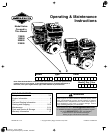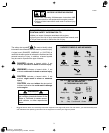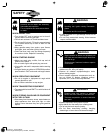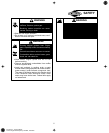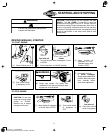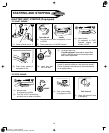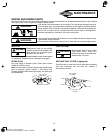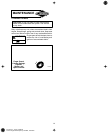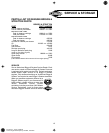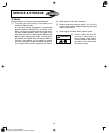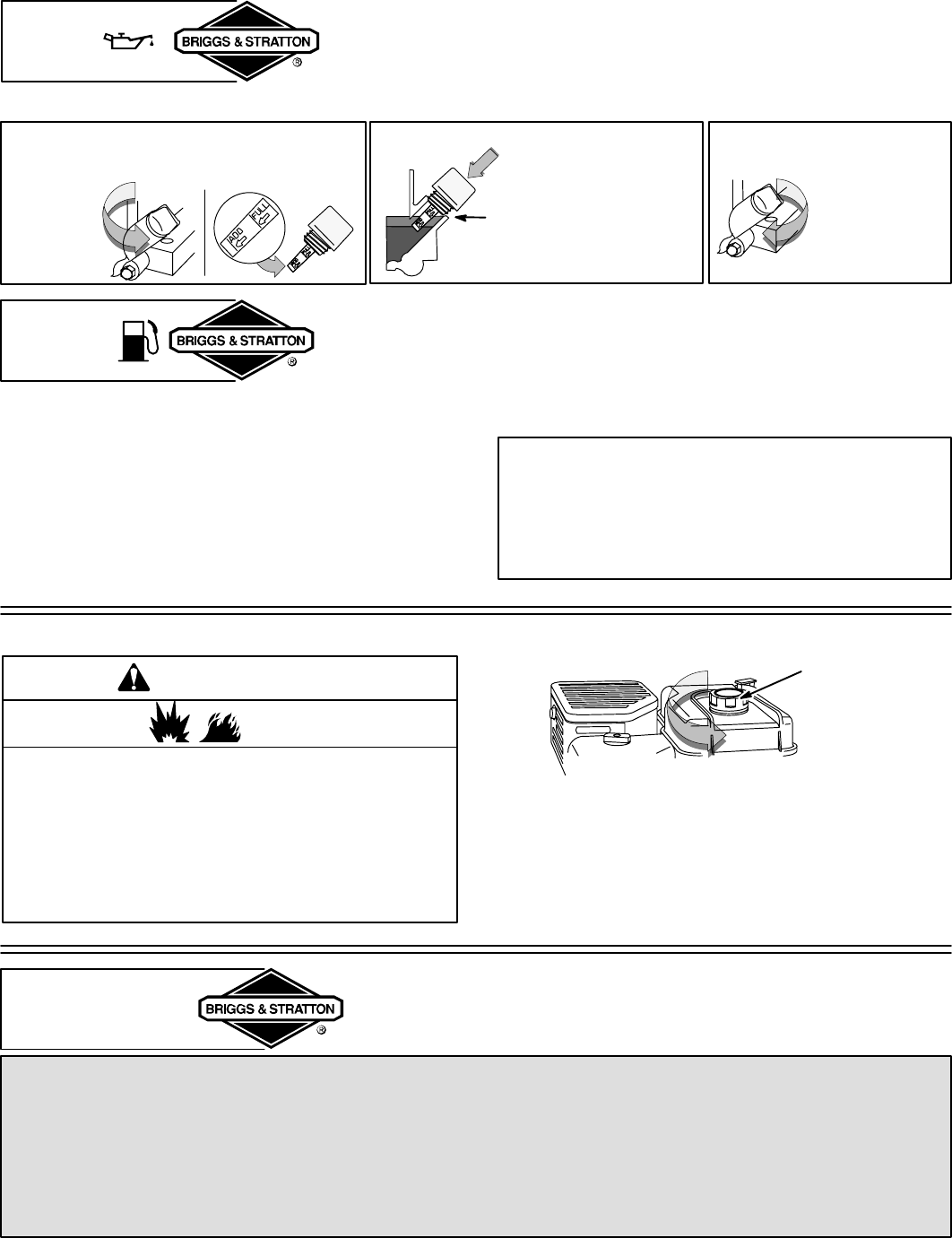
Document: - page 8 (Black)
Screen angle and frequency: 45.0000, 150.0000
8
OIL
CHECKING AND ADDING OIL
[1] Remove dipstick
and wipe with
clean cloth.
Low
Oil Fill
with Dipstick
[2] Insert dipstick,
but DO NOT
TIGHTEN.
Remove and
check oil level.
[3] Pour oil slowly.
Fill to FULL
mark on dip-
stick. Replace
and tighten dip-
stick.
FULL OIL
LEVEL
FUEL
TYPE OF FUEL TO USE
• Use clean, fresh, regular unleaded gasoline with a
minimum of 85 octane. Fresh fuel prevents gum from
forming in the fuel system or on essential carburetor parts.
Purchase fuel in quantity that can be used within 30 days.
• Do not use gasoline which contains Methanol.
• Do not mix oil with gasoline.
• For engine protection use Briggs & Stratton Gasoline
Additive available from your Authorized Briggs &
Stratton Dealer (P/N 5041 or single use pouch).
• This engine is certified to operate on gasoline. Exhaust
Emission Control System: EM (Engine Modifications).
CAUTION: Some fuels, called oxygenated or reformu-
lated gasoline, are gasoline blended with alcohols or
ethers. Excessive amounts of these blends can damage
the fuel system or cause performance problems. If any
undesirable operating symptoms occur, use gasoline
with a lower percentage of alcohol or ether.
ADDING FUEL
Fuel Fill
WARNING
[1] Remove cap. Fill tank to approximately 1-1/2
inches below top of neck to allow for fuel
expansion. Be careful not to overfill.
Briggs & Stratton Smart-fill) fuel can fills to the
correct level and automatically shuts off, reduc-
ing spills and emissions.
[2] Replace cap before starting.
• Turn engine OFF and let engine cool at least 2
minutes before removing gas cap.
• Fill fuel tank outdoors or in well-ventilated area.
• Keep gasoline away from sparks, open flames,
pilot lights, heat, and other ignition sources.
• If fuel spills, wait until it evaporates before
starting engine.
STARTING
STARTING AND OPERATING TIPS
♦Store and fuel equipment in level position.
♦Use fresh fuel. (See Fuel.)
♦Use correct type of oil for expected starting
temperature. (See Oil.)
♦Remove external equipment/engine loads. (See
equipment operating instructions.)
♦Periodically remove any debris buildup from the
machine (See Maintenance.)
♦After engine has started, let it warm up several
seconds to several minutes, depending on outside
temperature.
♦For maximum performance and life, operate engine
with choke in RUN and throttle in FAST.



